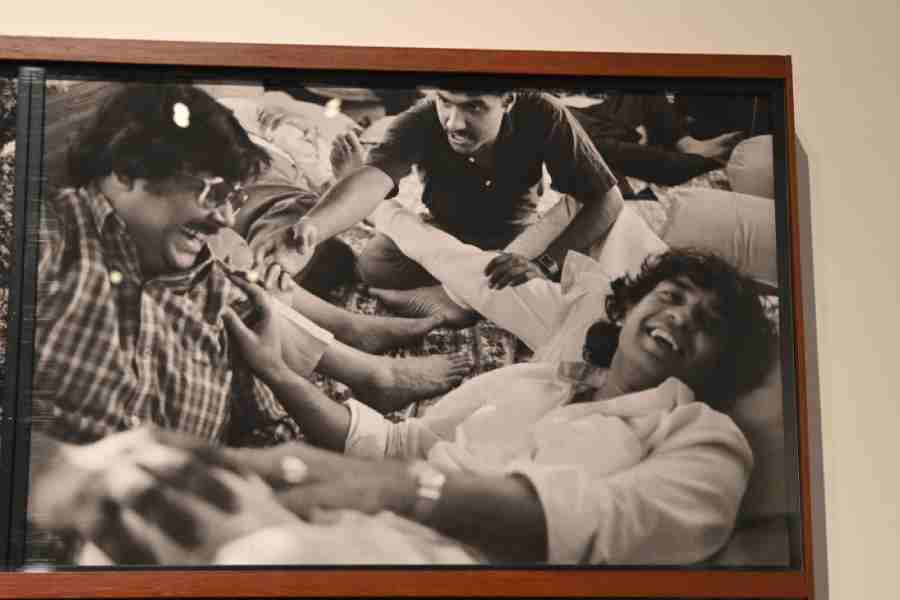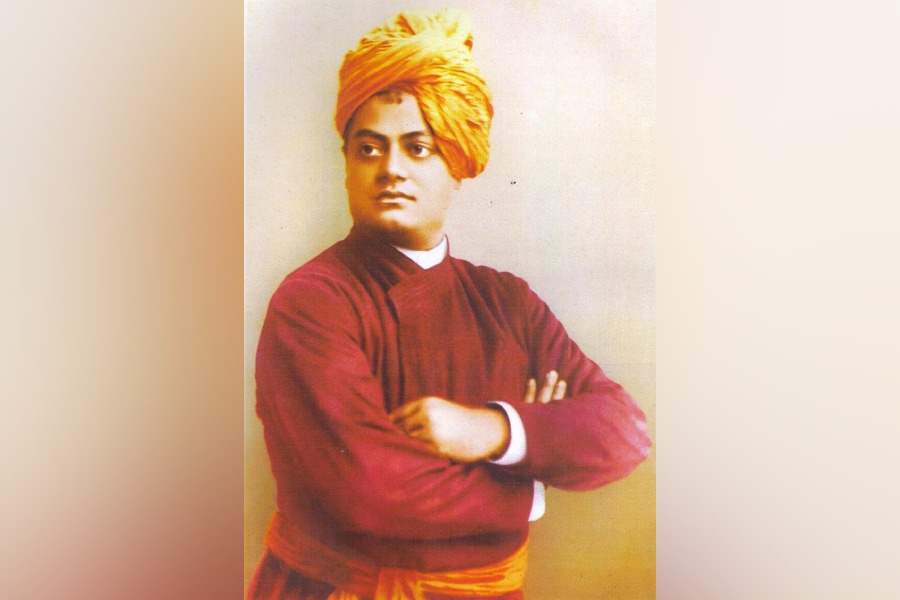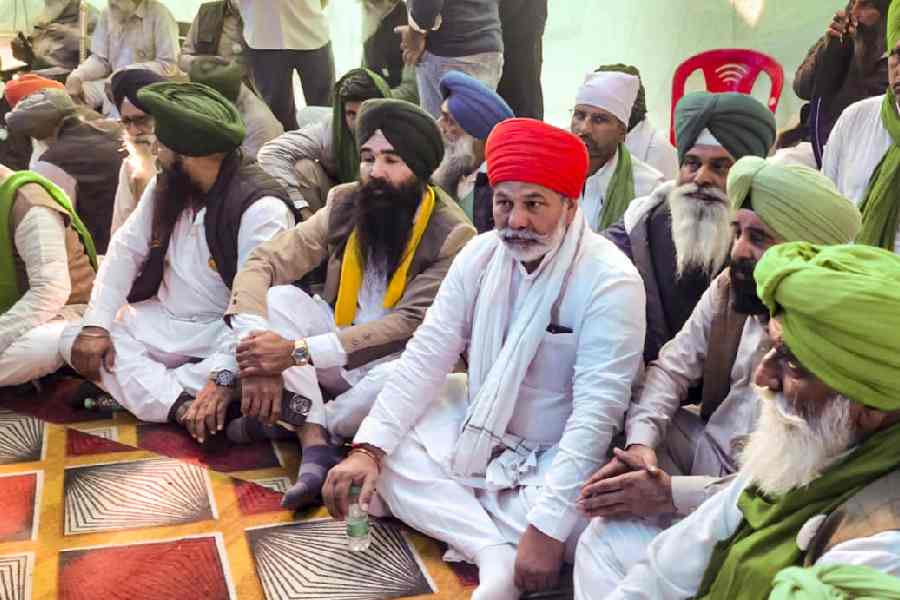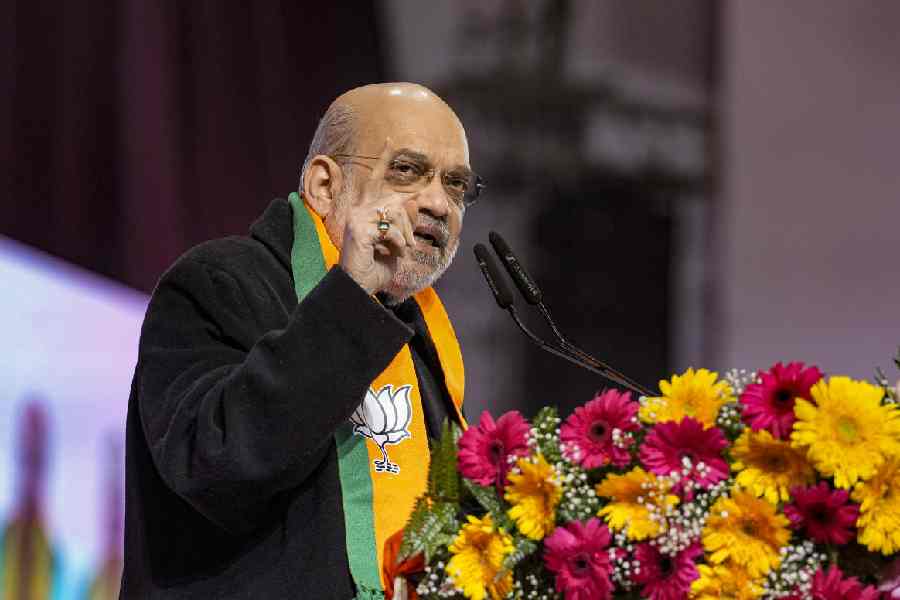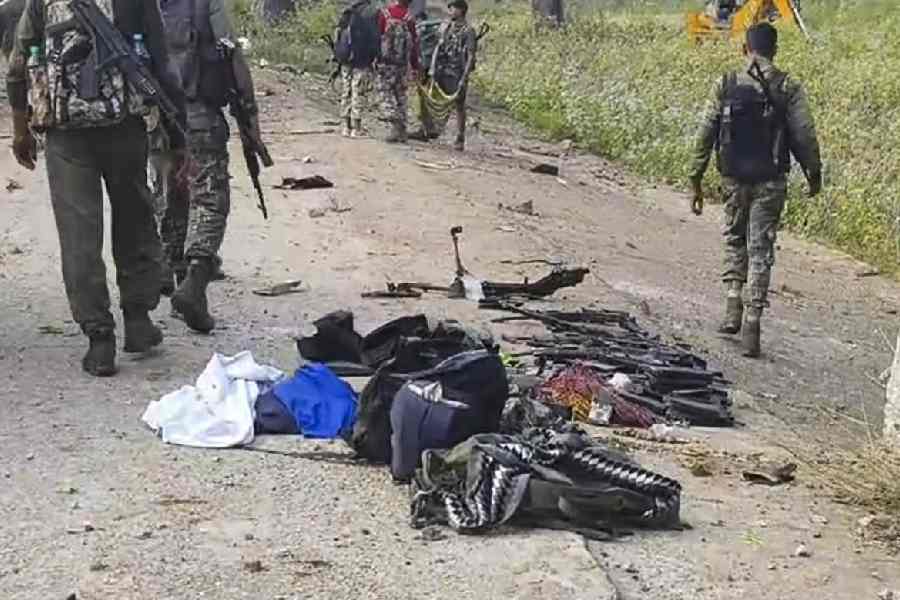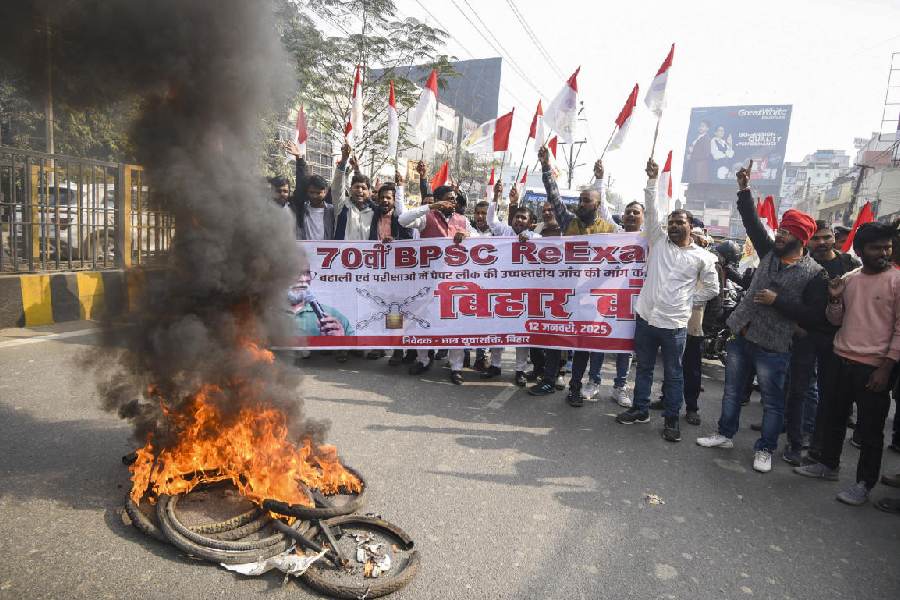Zakir Hussain is playing a game of cards on the floor of a bus with a very young Rashid Khan. V.G. Jog is laughing hard. Ajay Chakraborty is shaving Shujaat Khan. Vijay Kichlu is lying with his head resting on his arms in a khatiya at a dhaba as Shiv Kumar Sharma looks on.
Every winter, from the late ’70s, a bus would set out from Calcutta carrying stalwarts of Indian classical music on a tour of India. For two months, they would visit big cities and small towns. The roads would be dusty and bumpy. The bus might even encounter gun-toting bandits in Chambal.
The idea was to take music to the corners of the country. This story, for a few years, was documented on camera by Dayanita Singh, a leading photographer in the world today but barely 20 when she first stepped onto the bus in the early ’80s.
The results are there to see at Singh’s black-and-white exhibition on Indian classical musicians, titled “Museum of Tanpura”, at the Indian Museum, Calcutta, as part of the ongoing Bengal Biennale.
The photographs of the bus, which occupy one wall, bring to life the exceptional community of musicians and their way of life. Their laughter is generous, their clothes simple, and they make the word “celebrity” sound irrelevant.
With the tanpura always hovering near, we can almost hear the incredible music, but what the camera captures brilliantly is the joy in the air. It lights up the photographs.
Singh, who received the prestigious Hasselblad Award in 2022, was already photographing tabla maestro Zakir Hussain when she went on the tour. She calls him her mentor, the person from whom she learnt about the rigour and practice any craft requires.
“Zakir made me a photographer. Once I started photographing him, he led me into the privileged world of the musicians’ bus. I was adopted by the bus, led by Krishna Chowdhury of the Sangeet Research Academy (SRA),” Singh says.
The SRA organised the tour and Chowdhury “managed every detail of the tour”. Her tall frame and smiling face are as much a feature of the photographs as the musicians. “Rashid always hid her bag. He adored her,” Singh says.
Rashid Khan, the eminent vocalist and resident of Calcutta, too passed away recently. A segment of the exhibition is devoted to him.
“We stayed in school dormitories, halls; sometimes we slept on the bus and, occasionally, in a great ITC hotel,” Singh says. The SRA was set up by the ITC.
“I think the first tour I went on was to Gulbarga and Bidar. We stayed in a school building. They brought in mattresses, but it was cold and damp,” Singh says.
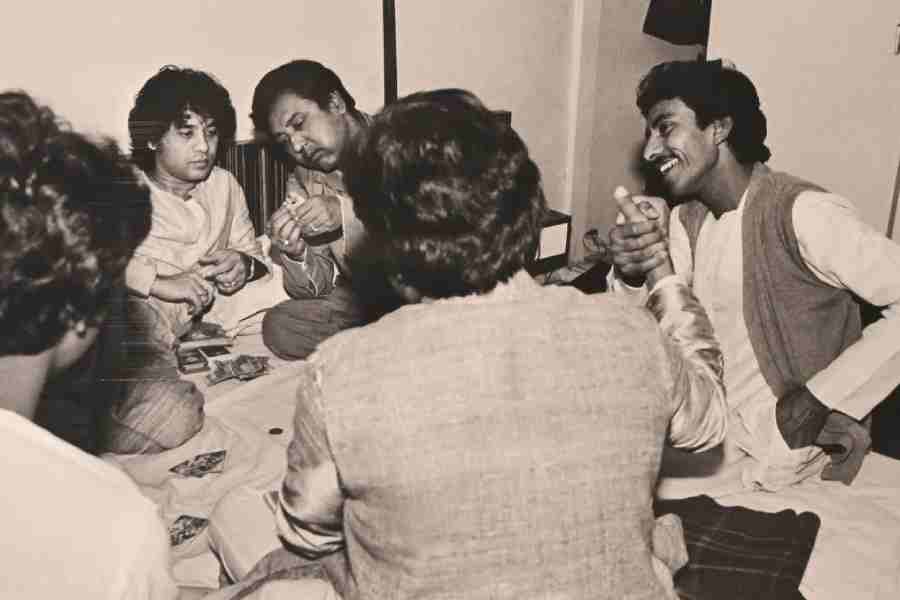
A picture clicked by Dayanita Singh shows Zakir Hussain playing a game of cards on the floor of a bus with Ananda Gopal Bandyopadhyay and Rashid Khan (extreme right). Subhendu Chaki.
But at the very beginning there was only a Matador van, recalls tabla player Samar Saha, a Calcutta resident and veteran of the tours. He is seen playing cards with Zakir Hussain and Rashid Khan and, at the inauguration, unabashedly confessed to cheating.
“I was the biggest cheat and I would be helped by Ananda Gopal Bandyopadhyay (tabla player),” Saha says. “There was always laughter. But we were also learning so much from our elder musicians.”
The Matador van, Saha says, belonged to classical vocalist A.T. Kanan, a resident of Calcutta.
Every year from the early’70s, the van, which had its seats taken off so that its floor could be covered with a gadda (mattress), set off with A.T. Kanan and other eminent Indian classical musicians on a tour of the country. The others included vocalist Malabika Kanan — A.T. Kanan’s wife — vocalist Vijay Kichlu, violinist V.G. Jog and tabla player Mahapurush Mishra.
By the time the SRA — the brainchild of Kichlu — was established in Calcutta in 1977, other distinguished musicians from the city and beyond were joining the tour. They included vocalists Girija Devi, Nisar Hussain Khan, Latafat Hussain Khan and Jagdish Prasad.
Another Matador van hired by the SRA, but with the seats intact, was added to the tour.
That would not be enough, either. Other musicians, many of them from Calcutta, was coming in. They included vocalists Ajoy Chakraborty, Subhra Guha, Arun Bhaduri and Mashkoor Ali Khan, the sitar player Shujaat Khan and Saha. Ananda Gopal Bandyopadhyay was there.
Rashid Khan was 12 when he joined the tours. Sometimes tabla maestro Alla Rakha would join; flute player Hari Prasad Chaurasia and santoor artist Shiv Kumar Sharma would be there, too, as would Zakir Hussain, Alla Rakha’s son, “who brought raunaq wherever he went”, Singh says. Zakir Hussain spread joy.
So, the SRA hired the big bus from the Chohan travel agency. Six or seven rowsof seats were taken off and the gadda spread. The seniors sat there; the juniors on the seats. Unless they were playing cards.
“We would wait the whole year for the bus trip,” Saha says. “The money was not important.”
Agra and Allahabad were popular destinations. At Chambal, the bus was stopped by armed bandits, Saha says. But on learning who the passengers were, the bandits suggested that the bus wait for some time as a gunfight was under way ahead.
In Murshidabad, a fan, angry because he could not get near Zakir Hussain, lunged at him and pinched him, Saha says.
The audience must have been very keen.
The bus photographs were among Singh’s first works, which she found during Covid while looking through her contact sheets. “They were magical,” she says. “Only now do I realise the immense significance of the weeks living with the maestros.”
This is the first time she is exhibiting the bus photographs “in their complete form”. Touched by the response, she would like them to be on permanent display at the Indian Museum, in the city where it all began.

